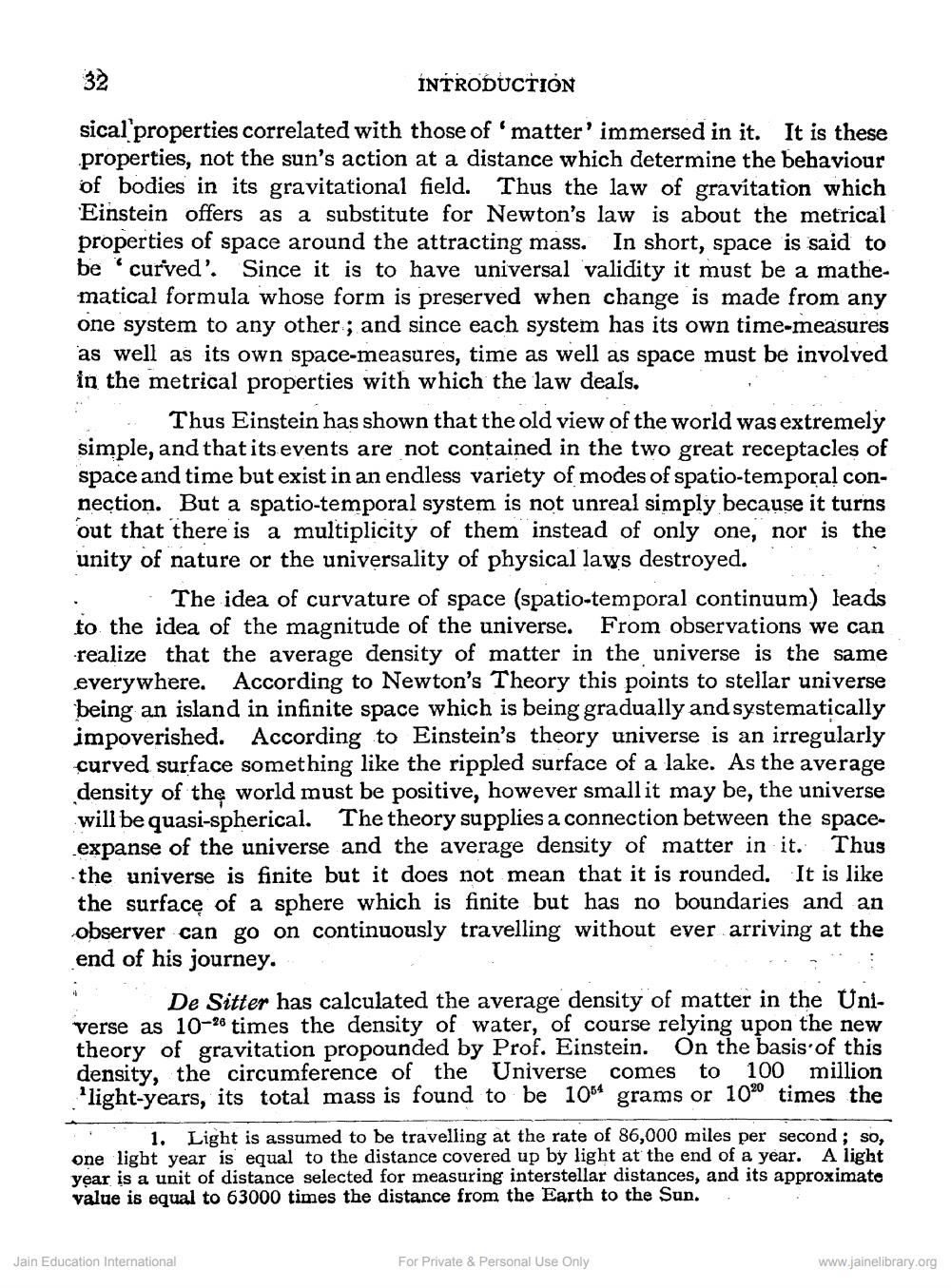________________
32
INTRODUCTION
sical properties correlated with those of matter' immersed in it. It is these properties, not the sun's action at a distance which determine the behaviour of bodies in its gravitational field. Thus the law of gravitation which Einstein offers as a substitute for Newton's law is about the metrical properties of space around the attracting mass. In short, space is said to be curved'. Since it is to have universal validity it must be a mathematical formula whose form is preserved when change is made from any one system to any other; and since each system has its own time-measures as well as its own space-measures, time as well as space must be involved in the metrical properties with which the law deals.
Thus Einstein has shown that the old view of the world was extremely simple, and that its events are not contained in the two great receptacles of space and time but exist in an endless variety of modes of spatio-temporal connection. But a spatio-temporal system is not unreal simply because it turns out that there is a multiplicity of them instead of only one, nor is the unity of nature or the universality of physical laws destroyed.
The idea of curvature of space (spatio-temporal continuum) leads to the idea of the magnitude of the universe. From observations we can realize that the average density of matter in the universe is the same everywhere. According to Newton's Theory this points to stellar universe being an island in infinite space which is being gradually and systematically impoverished. According to Einstein's theory universe is an irregularly curved surface something like the rippled surface of a lake. As the average density of the world must be positive, however smallit may be, the universe will be quasi-spherical. The theory supplies a connection between the spaceexpanse of the universe and the average density of matter in it. Thus the universe is finite but it does not mean that it is rounded. It is like the surface of a sphere which is finite but has no boundaries and an observer can go on continuously travelling without ever arriving at the end of his journey.
De Sitter has calculated the average density of matter in the Universe as 10-28 times the density of water, of course relying upon the new theory of gravitation propounded by Prof. Einstein. On the basis of this density, the circumference of the Universe comes to 100 million "light-years, its total mass is found to be 1054 grams or 1020 times the
1. Light is assumed to be travelling at the rate of 86,000 miles per second ; so, one light year is equal to the distance covered up by light at the end of a year. A light year is a unit of distance selected for measuring interstellar distances, and its approximate value is equal to 63000 times the distance from the Earth to the Sun.
Jain Education International
For Private & Personal Use Only
www.jainelibrary.org




